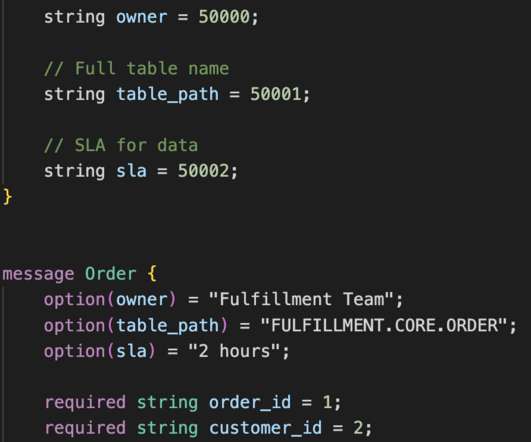Data-Oriented Programming with Python
Towards Data Science
MAY 11, 2023
Benefit #2: “ Flexible data model” — Yehonathan Sharvit “When using generic data structures, data can be created with no predefined shape, and its shape can be modified at will.” — Yehonathan Sharvit In the example below, not all the dictionaries in the list have the same keys.












Let's personalize your content